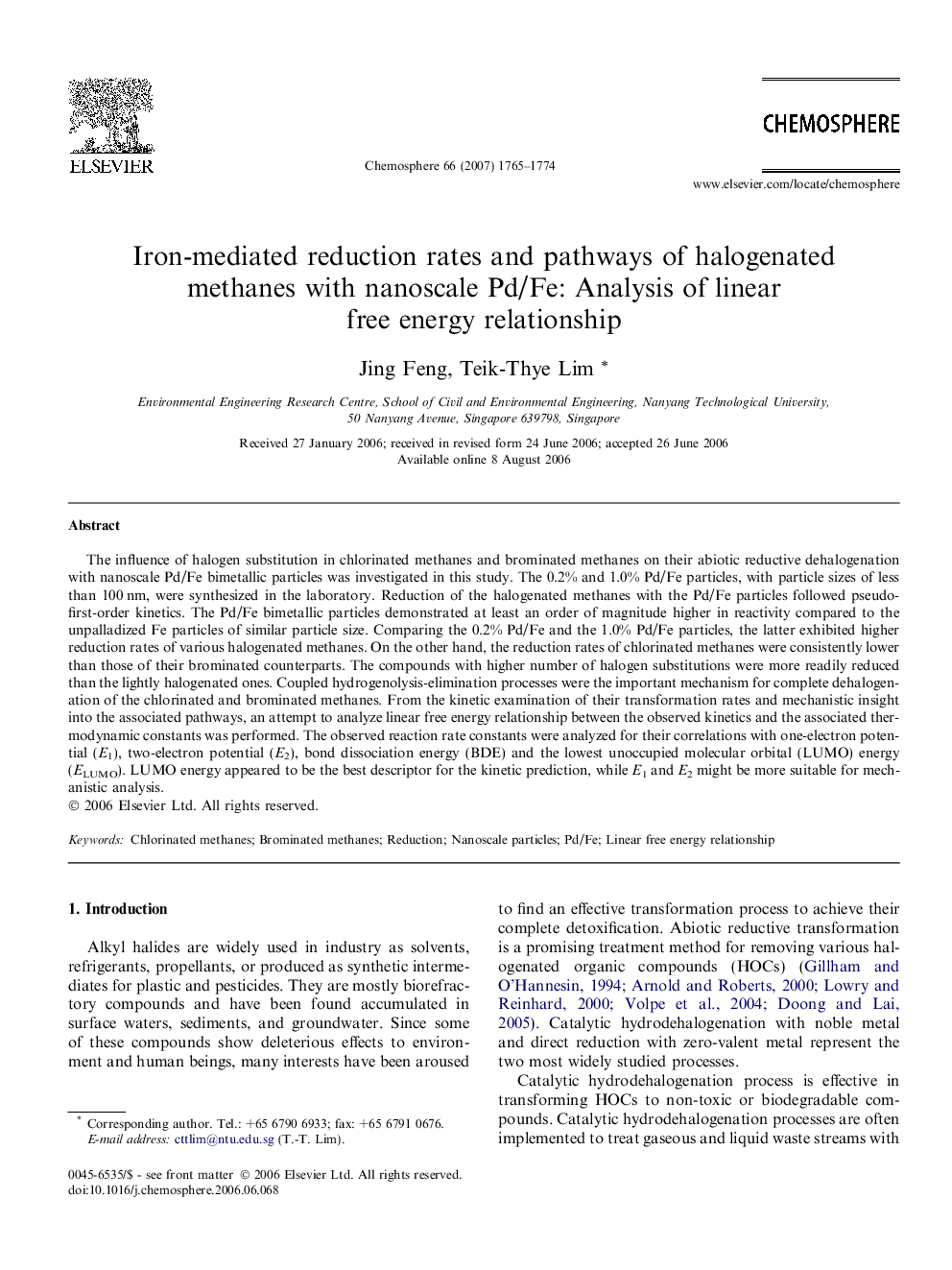| کد مقاله | کد نشریه | سال انتشار | مقاله انگلیسی | نسخه تمام متن |
|---|---|---|---|---|
| 4415423 | 1307746 | 2007 | 10 صفحه PDF | دانلود رایگان |

The influence of halogen substitution in chlorinated methanes and brominated methanes on their abiotic reductive dehalogenation with nanoscale Pd/Fe bimetallic particles was investigated in this study. The 0.2% and 1.0% Pd/Fe particles, with particle sizes of less than 100 nm, were synthesized in the laboratory. Reduction of the halogenated methanes with the Pd/Fe particles followed pseudo-first-order kinetics. The Pd/Fe bimetallic particles demonstrated at least an order of magnitude higher in reactivity compared to the unpalladized Fe particles of similar particle size. Comparing the 0.2% Pd/Fe and the 1.0% Pd/Fe particles, the latter exhibited higher reduction rates of various halogenated methanes. On the other hand, the reduction rates of chlorinated methanes were consistently lower than those of their brominated counterparts. The compounds with higher number of halogen substitutions were more readily reduced than the lightly halogenated ones. Coupled hydrogenolysis-elimination processes were the important mechanism for complete dehalogenation of the chlorinated and brominated methanes. From the kinetic examination of their transformation rates and mechanistic insight into the associated pathways, an attempt to analyze linear free energy relationship between the observed kinetics and the associated thermodynamic constants was performed. The observed reaction rate constants were analyzed for their correlations with one-electron potential (E1), two-electron potential (E2), bond dissociation energy (BDE) and the lowest unoccupied molecular orbital (LUMO) energy (ELUMO). LUMO energy appeared to be the best descriptor for the kinetic prediction, while E1 and E2 might be more suitable for mechanistic analysis.
Journal: Chemosphere - Volume 66, Issue 9, January 2007, Pages 1765–1774